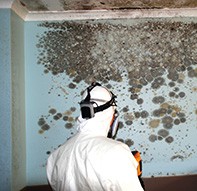Hypersensitivity pneumonitis: a multifaceted, challenging disorder
Hypersensitivity pneumonitis (HP), also called extrinsic allergic alveolitis, is an immune-mediated inflammatory disorder of the lung involving alveolar walls and terminal airways. It is caused by repeated inhalation of organic dusts that trigger an immunological reaction within the pulmonary parenchyma of a susceptible host. It is a complex syndrome with varying clinical presentations, intensity and disease course. A typical case history appears in the Box and Figures 1 and 2.
A recent review of HP included an extensive historical description. In 1713, an Italian medical professor described the health hazards associated with 52 occupations and provided the first account of what is now termed HP. The first detailed clinical descriptions of HP appeared in 1932, with multiple cases reported in the USA and England.
Picture credit: © Jacqueline Campbell/Indoor Air Quality Solutions, Perth, WA.

